Written by James M. Tate / 12/12/2018 / No comments / eighties , harry northup , interview , jonathan demme , jonathan kaplan , martin scorsese , nineties , peter boyle , robert deniro , roger corman , seventies , sixties
GETTING IN CHARACTER WITH HARRY NORTHUP: AN INTERVIEW
 |
| Cult Film Freak Interview with actor Harry Northup |
Few actors are as genuine, believable, and versatile on screen...
Among a long list of motion pictures and television shows he’s appeared in numerous projects with top-notch directors such as Martin Scorsese (including “Taxi Driver”, "Mean Streets," "Alice Doesn't Live Here Anymore," "Boxcar Bertha"), Jonathan Kaplan (“Over the Edge”), Paul Schrader ("Blue Collar") and Jonathan Demme (“The Silence of the Lambs”, "Crazy Mama"): And along with show business, Harry's the author of nine published books of poetry.
 |
| A young Harry Northup, United States Navy |
When I was 14, I auditioned for & got a part in “Time Out For Ginger,” which was being produced by the Panhandle Players, a community theatre group in Sidney, Nebraska. When I was 16, I played George in “Our Town” in the Panhandle Players production. Connie Madsen was the director & she taught me two things, “Speak so they can hear you in the back row” & “Do whatever you have to do to get into the theatre, even if that means sweeping the floor.”
I did the lead in the junior class play, “Headin’ For A Weddin’.” After graduating from high school in 1958, I joined the United States Navy. After serving my tour of duty I enrolled in Nebraska State Teachers’ College, at Kearney, in the fall of 1961. While there, I played Cassio in “Othello,” Rev. Hale in “The Crucible” & Billie Brown in “The Great God Brown.” The theatre director, Wesley Jensby, was very passionate about the theatre & he inspired me to become a professional actor.
 |
| Harry Northup in Who's That Knocking At My Door |
In early June, I was playing shortstop for Bunker Hill, a town team, when right before a Sunday game, Guy Palmerton, who was the producer of Lake Whalom Playhouse, in Fitchburg, Mass., called me & asked me to be an apprentice...
I said yes, took the train east, worked hard, did several small roles in plays & at the end of the season, Guy gave me my Equity card. In 1963, I auditioned for Robert Rossen, who was the director of “Lilith.” He hired me & I got my S.A.G. card.
 |
| Who's That Knocking At My Door, 1968 |
From 1963 to 1968, I studied Method acting with Frank Corsaro in New York City. In that class was Harvey Keitel. In late 1967, he recommended me to Martin Scorsese for the part of The Rapist in Marty’s first feature, “Who’s That Knocking At My Door.”
I met Scorsese in the 42nd St. office of Andrew Sarris. Marty liked me & he hired me. That was my first real film job.
I learned a lot about making movies on that job. It was a night shoot. We shot my scene in New Jersey at the farm house of Haig Manoogian, who was the head of the N.Y.U. Film School.
 |
| Silhouettes in Who's That Knocking At My Door |
I learned that film was shot in pieces – she gets out, the fight in the snow, dragging her up the hill, back into the car, the rape – it was a violent scene...
Once, I hit Zina’s head on the inner top of the door frame as I was thrusting her back into the front seat & Marty came over. Scorsese has always loved violence & this was a violent scene. But he has always loved his actors & he was compassionate & caring in the way he looked after Zina & me.
 |
| Harry Northup in Martin Scorsese's Boxcar Bertha, 1972 |
On “Who’s That Knocking At My Door,” everyone knew that he was a born filmmaker. In later films, he fulfilled his destiny...
I acted in his first six features & his first TV show, “Amazing Stories” (“Mirror, Mirror” 1985). He has always had a great passion for & a deep knowledge of film & it’s rare to work with someone like him. He allows you to contribute to the film. I believe that the years of his work on “Mean Streets,” “Alice Doesn’t Live Here Anymore” & “Taxi Driver” are some of the most fertile times of his career.
 |
| Harry Northup & Barbara Hershey in Boxcar Bertha |
First of all, you have to be relaxed & speak in a real way. In one scene I had to call Bernie Casey racist names & beat up David Carradine with a blackjack.
 |
| With Bernie Casey in Boxcar Bertha |
 |
| Harvey Keitel and Harry Northup in Mean Streets |
Scorsese gave me the part of Jerry in “Mean Streets.” In the script, Jerry was given a homecoming party. He was wearing a suit in that scene. He was given a good time & then he fell over drunk, face-first into his cake. I told Marty that I would like to have Jerry dressed in a uniform. That way I could stand out from the others.
I had heard Marty being interviewed & he had said, “Violence always erupts in the background.” This was in line with my conception of my character. I told Marty that while all these guys were philosophizing – “Art thou King of the Jews?” & “I come to bring order” – I’ll turn their picnic into a nightmare. I said that I will destroy the cake that they have given me, rip up the tables & attack a chick. Marty loved it.
 |
| As Jerry the Vietnam Vet in Mean Streets, 1973 |
I told Kent Wakeford, the cinematographer, that there are only two cakes, so please keep me in frame. Everything worked great. Marty loved my idea & the execution went as planned...
Vincent Canby in “The New York Times” said the scene where Jerry (the Vietnam Vet) tears up his own homecoming is “one of the most mysteriously sorrowful moments in recent America cinema.” The writer, Mardik Martin, who wrote it with Marty came up to me at a party after the movie opened & said, “You brought things to that part that weren’t in the script.” He thanked me. “Mean Streets” is still my favorite movie by Scorsese.
 |
| Alice Doesn't Live Here Anymore |
After I had settled in my motel room in Phoenix, the night before I was to work in “Alice Doesn’t Live Here Anymore,” I went to eat & on the way back from dinner, I ran into Marty Scorsese & Sandra Weintraub, his love & Associate Producer. She said, “Here’s Marty’s good luck piece.”
He asked me to come into his motel suite. In the front room, there was one book opened: It was The Complete Poems & Prose of William Blake. Marty opened the script, looked at my scene & said, “We’ll just keep this simple.”
I remembered earlier in his Warner Brother’s office, he had said, “I am going to shoot each scene in ‘Alice Doesn’t Live Here Anymore’ so that there is a parable behind each scene.” The next morning, I went into the bar. Marty introduced me to Ellen Burstyn & then he took me to a table & added several lines to the scene. I had worked as a waiter in N.Y.C. when I was studying acting & so I understood the bartender character. I wore a navy blue shirt (western) & a white western tie that looked something like a cross, Levi’s & cowboy boots. Marty liked my costume.
 |
| Harry in Alice Doesn't Live Here Anymore, 1974 |
Later, he added, “This is a close-up, so do not move much.” I thought, he has everything covered & that relaxed me.
“The Hollywood Reporter” ended its review of “Alice Doesn’t Live Here Anymore” by saying “The acting of Harry Northup as Jim’s & Joe’s Bartender exemplifies the emotional honesty of the cast.” Marty told me that my scene was the only one in the movie that was 1 to 1 – exactly on the screen as it was shot...... I love working with him. He’s a preeminent American director.
 |
| Harry Northup with Robert DeNiro in Taxi Driver |
Scorsese told me he wanted me to play Doughboy. He handed me the script of “Taxi Driver” & said, “The dialogue’s too direct; you know the way we work – sideways.”
I was at his office at The Burbank Studios. He added, “I’m going to shoot the city in such a surreal way no one ever has before. I’m going to turn ‘Taxi Driver’ into a gothic horror story.”
A week later I was called by an assistant of Marty’s & asked to come in & tape the part of Travis Bickle so they could send it to DeNiro, who was doing “1900” in Italy, so that he could study my Midwest accent. I went in to the studio & read Travis Bickle’s lines into a tape recorder. I had four scenes in the movie. The first one was a 3-page scene that took place at the Bellmore Cafeteria, a cabbie hang-out on Park Avenue South.
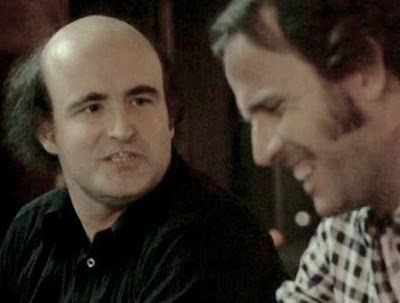 |
| Peter Boyle ("Wizard") and Harry Northup in Taxi Driver, 1976 |
In the beginning, I remember he came up behind me, put his hands on my shoulders in a very warm way & said, “Relax.” I remember him loving & laughing at my improvisations. Once, someone brought a danish up to the table & put it between Marty & DeNiro as we were all sitting there in between takes. They broke it in half & each ate half. They were the major parts of the film, along with Schrader’s magnificent script. But, Marty always gave each character his/her own rich density in the film.
 |
| Harry Northup and Robert DeNiro in Taxi Driver |
DeNiro entered the scene after we were there & Marty had him sit in a chair away from me so that there was an oval gap in the middle-right part of the screen.
Marty would rehearse Peter Boyle, myself & the other actor & then have DeNiro come in during the actual shooting. He did not want DeNiro to rehearse with us... Wanted to help create the alienation. Same thing with the Bellmore Cafeteria scene. Most of the dialogue was in the script, but I spiced mine up – “Got change for a nickel, Travis?” instead of “Yeah, we went to Harvard together” after Wizard had asked, “Travis, you know Doughboy, Charlie T?”
 |
| Harry Northup as Doughboy, Taxi Driver |
“Easy Andy”, the gun dealer, is a classic character… What’s his story?
Steven Prince was the subject of a documentary that Scorsese made, "American Boy: A Profile of Steven Prince." He was great as Easy Andy. I think Scorsese did about 34-36 set-ups the day he shot the gun-selling sequence.
The day they shot his sequence was very hot & as you remember it took place in one small room. Scorsese made you want to buy the guns. It was a very sensuous scene… Steven worked as an assistant to Scorsese on "New York, New York." I don't know what happened to him after the doc…
 |
| Harry Northup in Taxi Driver |
The one thing that I did do that wasn’t in the script was that I tried to sell DeNiro a piece of Errol Flynn’s bathtub. I told Marty my idea after rehearsing the scene. I said I would do it after I had exited the scripted scene. I would re-enter, pull the piece out of my pocket & try to sell it to him. If Marty didn’t like it, he could cut it & still have the original scripted scene intact & he wouldn’t have to move the camera for another set-up. Marty loved the idea. He told DeNiro that I was going to try something at the end – try to sell him something & just say no. The scene was fabulous & offbeat. Later, I realized Marty’s use of water images & it fit in.
Marty always loved it when actors tried something new. After the movie was over, he sent me a signed pewter cup with “Taxi Driver” 1975 & his name printed on it. “Taxi Driver” won the 1976 Palme d’Or at the Cannes film Festival.
And how was it working with the late Peter Boyle? Peter Boyle was great to work with. When we met at Marty’s hotel suite to rehearse, Peter would have a yellow legal pad full of cabbie stories, but I could always come up with something better because when I was in college, I had driven a cab for ten months, so I had many real cab stories. On the set, we shared an RV for our dressing room, so we spent a lot of time together when we weren’t shooting. During shooting, he listened, he was very imaginative, he made me laugh. He was witty, a wonderful actor & a beautiful person.
 |
| Harry Northup, Blue Collar, 1978 |
Paul Schrader hired me to play Hank in “Blue Collar.” I worked 6 weeks in Kalamazoo & Detroit, Michigan. Paul’s a great screenwriter & it was an honor to be in the first film he directed. It was fun working with Pryor, Harvey Keitel, Yaphet Kotto, Ed Begley, Jr. & Lane Smith...
 |
| Richard Pryor and Harry Northup, Blue Collar |
I played the Chief Goon, who throws Pryor off the farm. He was great in that picture, playing 3 parts. He’s open & fast. When I saw him on the set of “Blue Collar” for the first time, he was friendly to me...
We got into an improvisation in “Blue Collar” in a bar scene that tuned out well. I think Pryor was the fastest improv guy I’ve worked with next to DeNiro. Pryor was fast, funny, explosive & imaginative.
 |
| Harry Northup in Over The Edge, 1979 |
In July of 1978, I was waiting to go in & audition for “Mouse Packs” (original title of “Over The Edge”), Orion’s 2nd picture (when Orion was at Warner Brothers). The director, Jonathan Kaplan, came up to me, kneeled down & whispered in my ear, “I want you for the part of Sgt. Doberman; you have to go in there, be strong, have four balls; make contact with the producer, show warmth to him.”
After five auditions, I got the part. Kaplan cast me in the best part I ever got & George Litto gave me top billing, the only time I ever received that. I understood Doberman: I had played a sheriff for Demme in “Fighting Mad” & a deputy sheriff for Scorsese in “Boxcar Bertha.” My oldest brother had been an FBI agent & he helped me contribute dialogue. My wife Holly, who was a high school teacher, also helped me with my work on Doberman.
 |
| Two years earlier as Sheriff Len Skerritt in Fighting Mad, 1976 |
We shot the climax the first nine nights in Greeley. I had won many oratory contests in high school, so I was very confident about Doberman’s speech on stage. I was also filled with emotion. I understood who Doberman was. One morning in the hotel elevator, after shooting all night, Kaplan said to me, “I love working with you.” “I love working with you,” I replied. He’s a great director with a large range of emotion. He’s hired me 12 times as an actor. I grew up in western Nebraska, so it was a thrill to be making a movie in & around Denver. And at age 38, I was in top physical, mental & emotional shape.
 |
| With Matt Dillon, Over The Edge |
I just remember being filled with emotion & that I did the right thing. If you pull a gun on a cop, he will shoot you. I do remember coining a word “Golumbo,” a conflation of Columbian Gold.
I just felt a command of the stage & being upset that we let ourselves be locked in. When we finally got out & my character is going down the stairs & he runs to his cop car, the D.P. said I was running so fast, he could barely keep up with me. Working on “Over The Edge” was the greatest experience I ever had as an actor.
 |
| Harry Northup as Sgt. Doberman in Over The Edge |
Usually, white people project their darkness onto blacks & Hispanics. This film was about young white teens. I think it is lyrical, elegiac, an explosive look at teenage angst – teens who get into drugs & one has a gun. I think it’s the best teen movie since “Rebel Without a Cause.” When I was doing ADR work on “Bad Girls,” I asked Kaplan what was his best film. He said, “Over The Edge.” “I thought it would have been ‘The Accused,’ because Jodie Foster won Best Actress.” He said, “No. ‘Over The Edge.’” It had its own life; it didn’t even need me as a director.” I saw “O.T.E.” when it came out on DVD. It stands up. It’s like a pressure cooker waiting to explode....... My son Dylan, who was a surfer & into punk music & was 12-years-old when the picture was released, has always loved 'Over the Edge’.
 |
| Steve McQueen & Harry Northup in Tom Horn, 1980 |
The last two films [“Tom Horn” and “The Hunter”] were about bounty hunters. He came in as a bounty hunter [TV’s “Wanted: Dead or Alive”] & went out as a bounty hunter. It was great working with McQueen. He hired a lot of old cowboys & western actors...
I remember one time, before I entered a scene with Richard Farnsworth, Farnsworth began quoting Poe. There was one scene I had with McQueen & on the day we were going to shoot it, he changed my dialogue three times. He would have me memorize it, then have me do the scene with him & at the end of the day he said, “Let’s go back to the original.” One day in the outdoor courtroom, he told me that he had slept all night at the gravesite of the real Tom Horn & Horn’s spirit came to Steve & said that he was innocent in the killing of Willie Nickel. I love westerns & it was a pleasure to be in the moody, beautiful “Tom Horn.”
 |
| Harry Northup as Carmine in Used Cars, 1980 |
Robert Zemeckis called me in for a meeting & told me how much he liked my work in “Blue Collar,” which he said was one of his favorite films.
He gave me a 10-week contract to play Carmine. I lived in the Holiday Inn, in Tempe, for 11 weeks (1 week rehearsal) & worked 9 days. It was a good job & I got to contribute a little bit. “Used Cars” is a splendid satire & Kurt Russell did a superb acting job. One of the best things I did was write 40 postcards from Phoenix to Holly…
 |
| With Ann Ryerson in The Deliberate Stranger, 1986 |
There is just as much fun to be had on a drama as on a comedy. I had a lot of laughs on “Taxi Driver.”
You appeared in the Oscar winning Jonathan Demme film “The Silence of the Lambs”… How did you prepare for this role?
Jonathan Demme hired me to play Mr. Bimmel two & a half months before the film began shooting. I got a pigeon, Champ, kept him in a cat cage on the patio, learned how to hold him, brought him into the bedroom for an hour a day – Mr. Bimmel had pigeons – developed a relationship with him. I chose the clothes I would wear, with one exception & I deeply understood the loss Mr. Bimmel suffered when his daughter “went away for an interview & never came back.”
 |
| Harry facing Jodie Foster in The Silence of the Lambs |
I love my son. He was born in 1969. He ran away when he was 16 & I thought about a specific memory during my scene with Jodie that helped me believe in my character, what happened to his daughter & to evoke emotion.
 |
| Harry and son, Dylan Northup |
You have a good eye to remember my character in “The Deliberate Stranger.” It was a similar character. Marvin Chomsky directed that. He was a superb TV director. I had wanted to work for him for a long time before getting that role.
 |
| With Corman regular Dick Miller in Crazy Mama, 1975 |
As for Demme, I began working for him in “Crazy Mama,” in the spring of 1975 & then he cast me as Sheriff Skerritt (starring role) in “Fighting Mad.” Julie Corman produced “Crazy Mama” & Roger Corman produced “Fighting Mad.” I loved working with Scorsese & Demme on Roger Corman’s films. They’re shot fast, are fun & exciting. You learn fundamentals & gain experience.
 |
| With Jodie Foster in The Silence of the Lambs, 1991 |
You acted in many Jonathan Demme films… How is he to work for?
Jonathan Demme is a brilliant director who is positive & warm & inventive & has great affection for the characters in his films. He cast me as Sheriff Skerritt in “Fighting Mad.” He called me from location, in Fayetteville, Ark., before I left L.A. to join the company, & said, “If you need anything, call me.” I said, “There is one thing, but it’s minor.” “Nothing is minor,” said Jonathan. He allowed me to contribute ideas & dialogue to the script. After the shooting ended, I was doing ADR & Jonathan said to me, “You know, I had said that you were getting co-star billing.” I said, “Yes.” He said, “You’re not.” My heart sank. “You’re getting star billing,” he said. He has always been kind & gracious to me & I will always be grateful.
 |
| Harry Northup in Jonathan Kaplan's Bad Girls, 1994 |
Jonathan Kaplan is a magnificent director. He gave me the best part, Sgt. Doberman in “Over the Edge,” that I ever did. He hired me 12 times – movies, TV shows, movie-of-the-week, mini-series, music video. He hired me to play the Minister in the CBS/Hallmark remake of “In Cold Blood” & the film opened on my mouth as I gave a eulogy & the camera pulled back to the back door of the church. Jonathan is a strong, emotional director with a great sense of joy. He has a loving heart. He’s a wonderful person. I love working with Kaplan. He’s a friend, as is Demme.
A great director is a great observer & when he casts you in a film, he knows what you can do & what he wants. Scorsese, Demme & Kaplan have allowed me to contribute ideas, actions, dialogue to their films. They have trusted me. It is a blessing to have worked with these three masterful American filmmakers, & you are safe when you are led by a master. Film is a director’s medium & I have been fortunate to work with Scorsese, Demme & Kaplan, three of American’s best filmmakers.
 |
| Actor and poet, Harry Northup |
In 1966, I was studying Method acting with Frank Corsaro in Manhattan. I was rehearsing a short story with Leland Hickamn, a fellow student, in his apartment downtown. He had a bookcase of nothing but poetry. After rehearsal, Lee loaned me The New American Poetry, 1945-1960, Edited by Donald M. Allen, pub. by Grove Press. It contained poems by Allen Ginsberg, Gary Snyder, Corso, Olson, Blackburn, among others. I went home & read it. It was a time when 2 Off-Broadway plays & a film that I was going to do, fell through... I had a lot of emotion inside me that needed to come out. I was living in a 5-floor walk-up, 3 ½ rooms, bathtub in the kitchen, $53 a month.
Every morning, Mon.-Fri., I sat at a card table & wrote. I wrote for a year. I wrote about coming from the country to the city. I wrote first person experiences. I learned from Blackburn to write about what you see. You didn’t have to be an academic or an intellectual to write poetry, you could write about your own experiences & your imagination. I began to buy books at the Eighth St. Book Store: The Cities, by Blackburn, For Love, by Creeley. Books by Dorn, O’Hara, Ginsberg, Snyder, Wakoski. I learned the tradition. Blackburn told me once when I asked him how does one learn to be a poet, “Two ways: reading & writing.” So, Leland Hickman turned me onto poetry & we had a literary/spiritual connection until he died in 1991.
 |
| Harry Northup and his wife, poet Holly Prado |
You have to work hard at both. I have written poetry for 43 years & have had 9 books of poetry published. I have made a living as an actor for over 30 years. A director has to hire you to be in a film. You can write any time. To be a good poet, you have to learn the tradition from Homer, Hesiod, Sappho, Virgil, Dante, Chaucer, on, & you have to develop your craft. I received my B.A. in English from California State University, Northridge, where I studied verse with Ann Stanford, one of America’s best poets.
Who are your favorite poets?
Whitman, Keats, H.D., William Carlos Williams, Hart Crane, are poets I love. Whitman is all-embracing; Whitman’s Leaves of Grass, W.C. Williams’ Paterson & Crane’s The Bridge, are books I return to over & over. The poets in L.A. whom I love are Hickman, Prado, Stanford, McGrath, Phoebe MacAdams & James Cushing. I cherish their poetry. Their words & their spirits inspire me.
like a breeze the final caress
(for holly prado northup)
a white tornado spins, drops
rain, shines fire, wings with
knives sheathed, revolving bone
white tree -- golden highway
a crown, nest revolving, upward
path shoots & two horizontal half-
circles meet, waterfall wings
tree-like motion spins
red grapes, clusters around golden
center, night with stan getz playing
“alfie,” breeze, no high humidity,
“what a difference a few degrees
make”
golden cathedral: spinning top
lilacs, flowers trailing, flashlight
shining down -- sunflower with
petals glowing up -- arrows like
jets rush round the circumference
many sunflowers strewn from
shoulders, fires of them, golden
bach pipes -- petals like fires rush
up sides of canyons, double in
height, waterfalls wide as ocean
recede in dawn’s rosy light
propeller at center of valley
no shadow act nor arrows like
thistle -- still face -- arrows like
lightning -- arrows shoot out in
a diagonal fashion, buddies in war
long white plane-like salamander
arrows, like flags, dance around
perimeter, fire glows at planet’s
being eclipsed -- peacock tail spread
in gold, wheat fields lit from above
at night -- dark path -- arrows shoot
out from rectangle’s center, one
golden ring around large black
bird’s long neck -- feathers dance
arrows transform into golden circle
bird flies upsidedown, below a
golden boat, golden twisting serpent
sunflower rushes forward, with rose’s
fragile closing petals, arrow departs
like a breeze the final caress
8 10 08
harry e. northup
 |
| Join The Party by Clicking This Link for Harry Northup's Official Facebook Fan Page |
Subscribe to:
Post Comments (Atom)
All Time Popular
-
Robyn Hilton enters into an eclectic exploitation comedy career in Wonder Women circa 1973 As mentioned a few posts ago, ROBYN HILTON, b...
-
year: 1978 cast: Allen Garfield, Leif Garrett, Kathleen Lloyd, Tony Alva, Pam Kenneally rating: ***1/2 Although promoted as a Leif Garr...
-
Kari Michaelsen in Saturday the 14th year: 1982 In LOVE AT FIRST BITE, a popular comedy that took the vampire genre by satire, Richard ...
-
Cornelia Sharpe in BUSTING Year: 1974 Rating: **** Starring Elliott Gould and Robert Blake as determined vice cops BUSTING hookers, makin...
-
Mary-Louise Weller in NATIONAL LAMPOON'S ANIMAL HOUSE ANIMAL HOUSE, directed by John Landis and produced by Ivan Reitman, stars John Be...
-
Kerri Green and John Candy in SUMMER RENTAL Year: 1985 John Candy, in his first leading role, plays a burnt-out air traffic controller ...
-
Robyn Hilton on STARSKY AND HUTCH Model/Actress ROBYN HILTON played Mel Brook's secretary in BLAZING SADDLES and turns up in an epis...
-
Robyn Hilton in Video Vixens the same year as Blazing Saddles: 1974 The Anthology of Comedic Parodies, already done in several Woody All...
-
CADDDYSHACK is best known for the iconic leading actors: Rodney Dangerfield, Chevy Chase, Ted Knight, and Bill Murray, but originally the ...
-
Elizabeth James and Tom Laughlin on equal ground YEAR: 1967 THE BORN LOSERS wasn't supposed to happen but thank God it did since BIL...
Featured Post
PAUL MUNI IN HOWARD HAWKS ORIGINAL MOB-EXPOSE 'SCARFACE'
Title: SCARFACE Year: 1932 Rating: *** Howard Hawks' SCARFACE is like a Cliff's Notes for a book that's yet to be written... an...


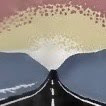





































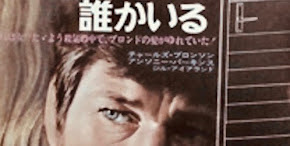

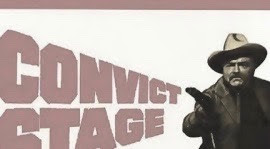







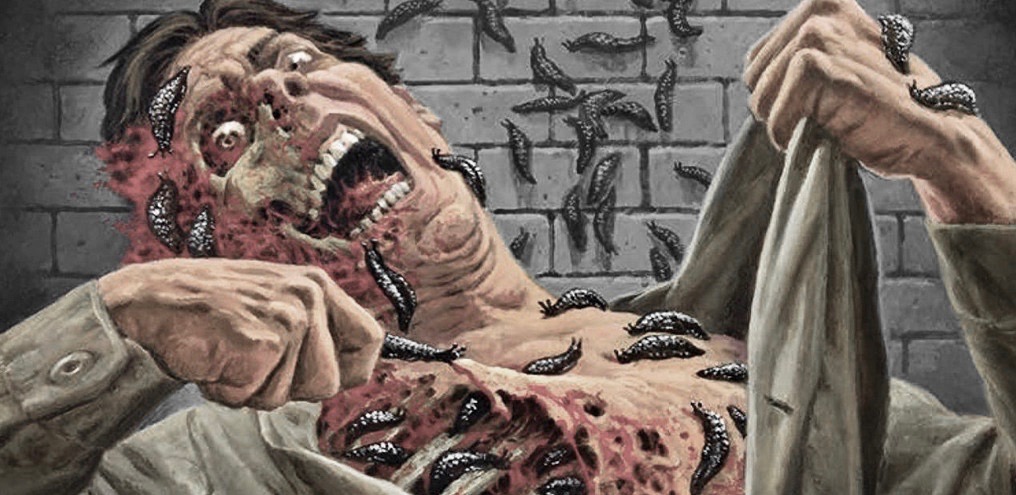






No comments:
Post a Comment
Note: Only a member of this blog may post a comment.